How to use the epilator correctly?
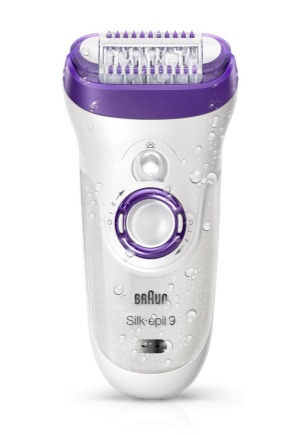
The epilator is a practical and indispensable device for home hair removal. It is easy to use, affordable and effective - legs (and other treated areas of the body) remain smooth for up to 2 weeks. How to use the epilator correctly, you will learn right now.
Types of electric epilators
The main task of any epilator is to extract the hair with the bulb, and according to the type of this impact, the machines are divided into:
- tweezers;
- disk.
Each of them removes several hairs in one pass over the skin, but they do it differently. The disk model has several pairs of disks that rotate and simultaneously close and open during operation, reliably capturing hairs - usually up to 32 pieces in one area. Tweezers differ in the number of tweezers - there can be 20 or 40 (the latter will work more efficiently), and their essence is to pull out the hair with the same tweezers.
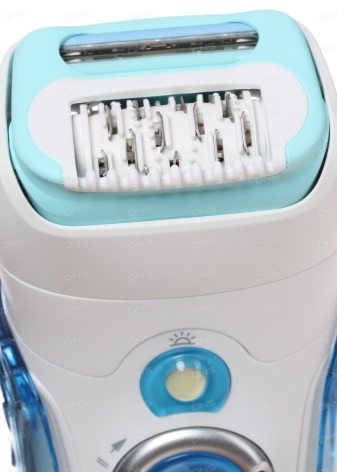

Experts say that the most popular - tweezer models. With them, the procedure is faster (if we talk about a large number of tweezers).However, they believe that disk models are more effective in coping with vegetation. There is no strong and prolonged irritation (if the rules for using the epilator and preparing for the procedure are followed).
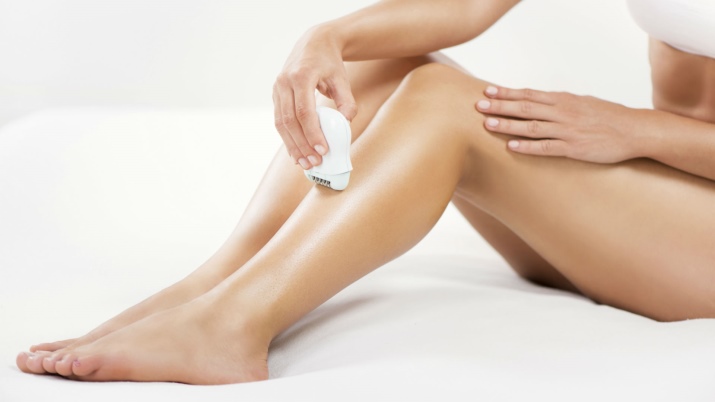
Epilators have several methods of anesthesia - blowing with cold air, cooling with a special bag or vibration during operation, which well distracts from discomfort. The speed of the devices also varies: one, two or three. Two-speed models are optimal, three-speed models are more advanced.
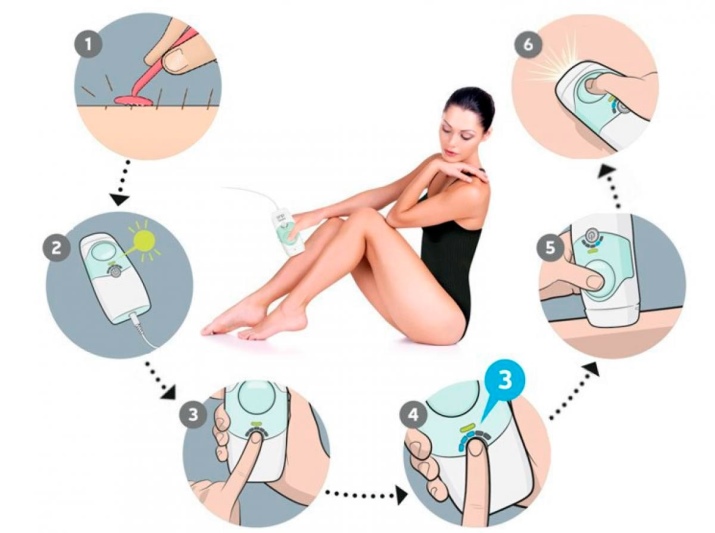
The working head in almost all modern models is removable. If not, it is not recommended to take such a device. During operation, hairs and skin particles enter the device, they must be removed from the head after the procedure. If this is not done, skin irritation, clogging of pores, infection of the dermis cannot be avoided.


Electric epilators differ in the type of power supply:
- from the network;
- from a battery.
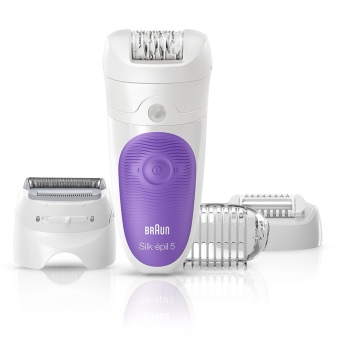

Battery-operated devices can be taken with you on a trip or do hair removal away from home.
Epilators may have:
- Backlight – it allows not to miss thin hair.
- Additional nozzles to work with the bikini area or armpits.
- Possibility to use in the showerwhich reduces pain during the procedure.
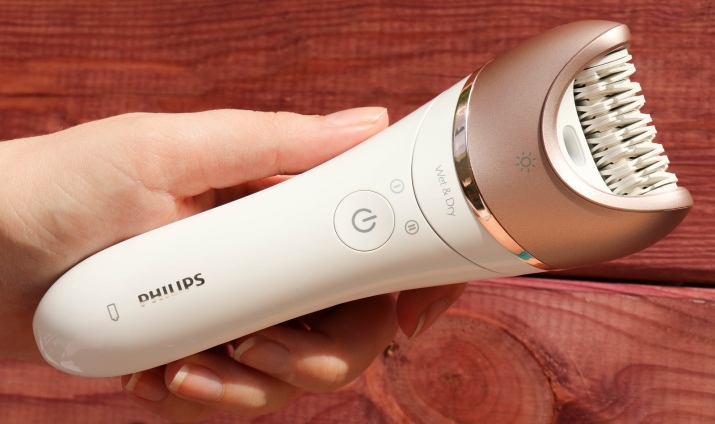
Advantages and disadvantages of epilation
Epilation - the surest way to get rid of unwanted vegetation, the effect of the procedure is temporary and usually lasts 2 weeks. Its essence lies in the deformation of the hair follicle and the removal of the hair with the bulb, because of which its further growth is disturbed - the hair will be thinner, softer, it will lose pigment. Hair removal with an epilator has many pros and very few cons.
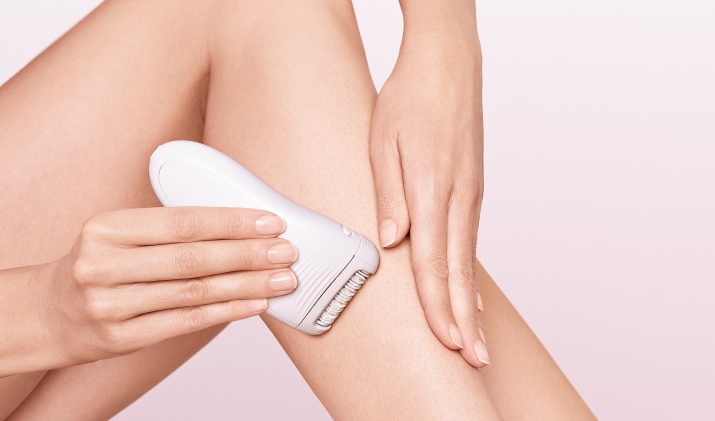
It is worth starting with the advantages of the device:
- Ideal for home hair removal on any part of the body.
- Long-lasting effect of smoothness - lasts about 2 weeks. Each epilation procedure entails the further growth of thin and light hairs - the structure of the hair is disturbed.
- Ease of use. It is easy to do hair removal with a machine - it is enough to drive it slowly over a certain area of \u200b\u200bthe body.
- It does not require long-term preparation - just connect the device to the network and start working with it (unlike sugar or wax epilation, when you need to heat the composition and maintain its temperature constantly).
- Affordable price for the procedure. Of course, the cost of machines varies, but even among them you can choose the best price-quality ratio and not spend money.
- Almost absolute the absence of serious contraindications (these include diseases of the nervous system and injuries of the skin surface, fungal and neoplasms).

Hair removal with an epilator has its drawbacks:
- Unpleasant (and even painful) sensations during epilation - especially in sensitive areas of the bikini, armpits. It is not very pleasant to use the device for the first time and several times after using the razor - it becomes problematic to remove thick hairs from the root, but each time it is easier.
- The appearance of irritation - it also occurs due to a small damage to the skin. Proper preparation and care after the procedure can avoid it.
- Cannot be used on the face.
- Ingrown hair, which occurs due to a violation of the direction of growth. The hairs lose their orientation in growth and begin to grow down.
- Long process. Epilation on the legs or arms can take a couple of hours, because you need to go through every centimeter of the body at an average pace.Driving the epilator quickly is not very effective. The hair is just frizzy.
Like any type of epilation, removing unwanted hair with an epilator has advantages and disadvantages. In order for the procedure to be pleasant and effective enough, it is necessary to prepare for it. How - you will learn about this in the next section.


Preparation for the procedure
Before the procedure, it is recommended to take a shower or bath in order to cleanse the skin and steam it a little. Steamed skin is more likely to “give up” the hairs with the root, and it becomes easier for the bulb to come out of the pore. You can use a body scrub: abrasive particles will remove the layer of "dead" cells and ensure the effective operation of the device. They protect against ingrown hairs and irritation.
If the epilator can work in water, like the waterproof Braun "Silk-épil 7 Wet & Dry", then the procedure can be carried out directly in the bathroom - this is less painful. Returning to the classic "dry" devices, it is worth noting that before the procedure it is necessary to wipe the skin with an antiseptic - a solution of miramistin, chlorhexidine, peroxide or any other.

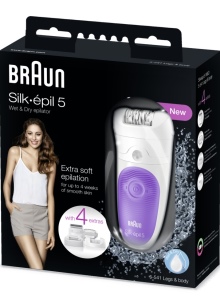

Recommendations for using the device at home
Consider the following tips:
- It is recommended to hold the head during epilation against hair growth - this is how they are removed along with the bulb.
- Before the procedure, the skin must be cleaned - take a bath or shower, use a scrub or a hard washcloth to remove the keratinized layer of cells. In addition, abrasive elements will additionally lift the hair.
- Before epilation, you can not lubricate the skin with oil or cream - this will ensure that the tweezers or discs slide over the skin, and they simply do not capture the hairs.
- It is not recommended to shave the hair before epilation for about a week (the optimal length of the hairs is 5-7 mm).
- If the hair in the area is more than 7 mm, they will have to be cut. The machine will not be able to remove them qualitatively along with the root, but simply separate them at the base.
- After the procedure, you can treat the body area with a soothing lotion (without alcohol) and apply a light moisturizer.
- It is worth using a gel or cream that slows down hair growth.
- It is recommended to start processing the zone at the lowest speed, increasing the speed of the head gradually. This will allow the skin to get used to the new sensations and reduce pain.
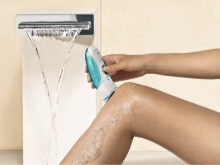
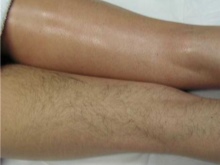

After epilation, almost all women notice irritation in the form of small red dots on the body - this is a completely normal skin reaction. They will go away on their own (it will take from a few minutes to a couple of hours) - provided that you do not scratch or rub the skin. To relieve unpleasant symptoms, treat the area with a decoction of herbs or tonic (with aloe vera, chamomile). The epilated area may hurt for several days after epilation - treatment with a healing cream (Bepanten, Panthenol and any light baby cream) will help remove discomfort.

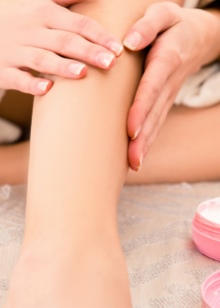

Rules for processing individual zones
There are certain recommendations that should be taken into account. This way you can avoid unpleasant surprises.
Legs
They have the largest area, which means that the procedure will take about 1-1.5 hours. It is necessary to epilate the legs against hair growth, in the direction from the bottom up - from the ankles to the knees. If you stretch the skin before treatment with an epilator, then the effect will be even better - during stretching, the hairs “tear off” from the surface, and it becomes easy to remove them along with the bulb.

When treating the legs, hold the epilator head perpendicular and do not press on it - it should be in contact with the skin, but not gripped by tweezers or discs.
Armpits and bikini
The skin in these areas is the most sensitive. Before treatment, it is important to make sure that the skin is dry, and especially in the armpit. It is also recommended to stretch the skin on it in order not to accidentally grab it with tweezers, discs and effectively remove all hairs. When working with armpits, it is necessary to guide the epilator against hair growth - from the bottom up, however, here the hairs can grow unevenly, therefore, during the final treatment, walk the head in different directions.
Treatment of the bikini area begins with the pubis - hold the head of the device perpendicular to the surface of the skin and move it from bottom to top. Reviews on the network say that it is quite possible to remove hairs from the pubis by their growth (from top to bottom), and this is less painful. It is important to ensure that the hair is removed completely, and not in small pieces - then it just breaks off.


When working with the labia, it is necessary to guide the head of the epilator against hair growth, stretching the skin with your fingers and holding it in place so that the tweezers or disk do not hook on neighboring areas.
How to reduce pain?
When purchasing an epilator, choose models that reduce pain from the procedure: some can “blow” on the skin during treatment or vibrate strongly, others come with a small cooling glove that is previously kept in the freezer and applied to the skin until epilation. Will help reduce discomfort from the process of "folk" methods:
- Stretch the skin with your free hand and guide the epilator over the slightly stretched area with your other hand.Firstly, on the stretched skin, the capture of the hair is better, and secondly, the pain noticeably recedes.
- Start the hair removal procedure from the legs - especially if you are doing this for the first time. When treating more delicate areas, choose a "starting point" with fewer hairs, moving towards the thickest area. When it comes to bikinis, start at the top of your pubis and work your way down.
- Make a small compress of ice - attach a tissue pack to the treated area of skin, wait 2-3 minutes and start the painless epilation process. If a special cooling glove is included in the kit, do not neglect its use - it really saves from pain.



Pain during epilation is completely normal. The fact is that the hair follicle closely “cooperates” with the nerve endings in the hair follicle. When the bulb breaks out, there is a slight pain sensation, reminiscent of a mosquito bite. When there are several mosquitoes, the sensations are even more painful, but they can be endured - especially when treating legs and arms (including repeated ones).
Breaking down one leg epilation procedure into several will help reduce pain - treat 10-20 cm of skin in one day if the pain is really so unbearable.
Practical Tips
There are the following important recommendations:
- For the first time, experts recommend carrying out the procedure on the legs, because the device was invented for the treatment of this particular zone. Start with the lower leg, get used to the sensations, and move on to the underarms and bikini area.
- Do not remove all hair at once during the first procedure or when treating a sensitive area, stretch the "pleasure" for 2-3-4 days (if necessary) - so that the skin gets used to it.
- When buying an epilator, look for models with a removable head (middle or high price range). The advantage of this or that device can be additional nozzles or cooling elements that will significantly reduce pain.
- For the intimate area, choose a special nozzle or a separate epilator (usually it comes with the main one, as in Philips "HP6549").
- Before the procedure, carefully inspect the skin for damage. With significant defects, this part of the body will have to be bypassed, as well as areas with varicose veins, a noticeable vascular network.
- It is recommended to use the epilator on completely dry skin (except for special models for epilation in water).
A properly selected epilator is the key to high-quality epilation. What to look for when choosing, see the next video.




























